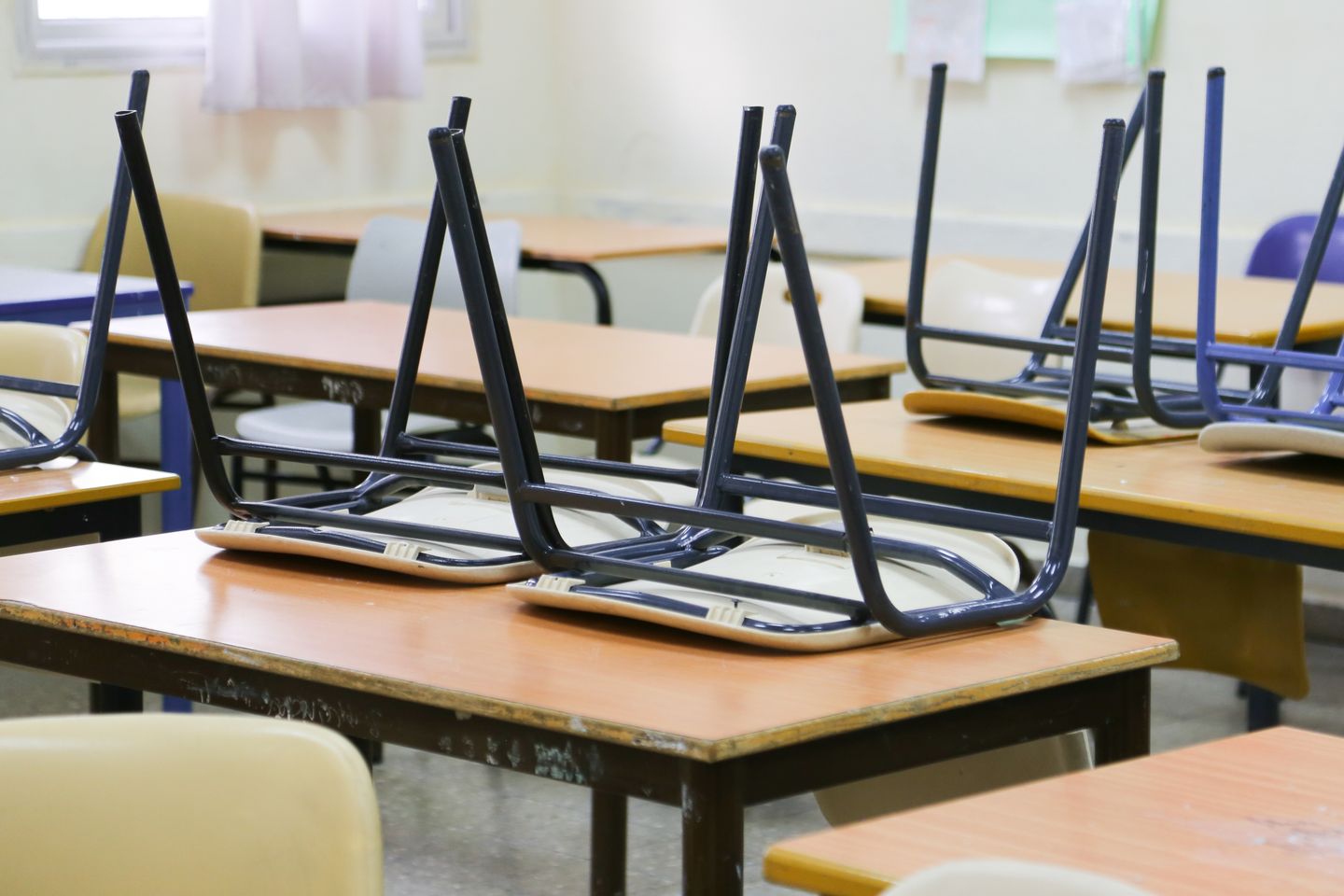
Public schools are gutting billions of dollars from staffing, program and supply budgets heading into summer vacation as they cope with the Trump administration ending access to pandemic stimulus grants.
According to Burbio, a website that tracks K-12 budgets, the cuts have hit large school districts with shrinking enrollments the hardest. On March 28, the Education Department reversed a Biden administration decision extending the deadline for schools to spend the rest of their COVID-19 relief checks.
The federal government allocated $189.5 billion in Elementary and Secondary School Emergency Relief grants for K-12 campuses to implement public health restrictions and offset learning losses during pandemic-induced campus lockdowns.
Of that sum, the Trump administration approved $67.5 billion and the Biden administration $122 billion.
“The ESSER money, as a one-time injection of funds, may have resulted in some districts buying more than they normally would,” said Dennis Roche, Burbio’s president.
Several education analysts interviewed by The Washington Times said hundreds of schools with dwindling headcounts spent the money on support programs, technology upgrades and extra teachers they could never hope to sustain.
“Students and families were struggling,” said Tyrone C. Howard, a UCLA education professor specializing in racial equity. “So even though we knew these dollars were not long term, it helped to prevent educational experiences and outcomes from being worse.”
According to national estimates, public school district enrollment has dropped by 1.5 million since 2020. Patrick J. Wolf, an education reform professor at the University of Arkansas, chalks that up to declining birth rates and 1 million students transferring to private schools or homeschooling during pandemic lockdowns.
“The past 30 years have seen a consistent pattern of public schools receiving more money to educate fewer students, driving per-pupil spending to new record levels every year,” Mr. Wolf said. “Eventually, that pattern had to end.”
According to the Census Bureau, U.S. birth rates have fallen to historic lows since peaking in 2007.
“But many school districts have refused to acknowledge the harsh fiscal reality of declining K-12 student enrollment,” said Virginia Gentles, an education analyst at the conservative Defense of Freedom Institute for Policy Studies. “Even though district leaders knew that the ESSER funds were only available for a limited time, they irresponsibly used the temporary funds to plug budget holes and hire permanent staff.”
‘COVID is over’
It remains unclear how much pandemic stimulus money remains unused.
The Trump Education Department last month cancelled a Biden administration decision to push back the deadline for spending it from Jan. 28, 2025, to March 28, 2026.
In a statement Friday to The Times, a spokesperson said the department has “established a process to consider funding extension requests on a project-specific basis where it can be demonstrated that funds are being used to directly mitigate the effects of COVID-19 on student learning.”
“COVID is over,” the spokesperson said. “States and school districts can no longer claim they are spending their emergency pandemic funds on ‘COVID relief’ when there are numerous documented examples of abuse and misuse.”
New York, California, Pennsylvania and Maryland led a coalition of 15 Democrat-led states and the District of Columbia in filing an April 10 lawsuit against the Trump administration to restore the funding.
“This is a breathtakingly heartless action that threatens to change children’s futures for the worse, and our Office will not stand for it,” said Maryland Attorney General Anthony Brown, whose state claims the reversal created a $305 million hole in its current year education budget.
Chester E. Finn Jr., a distinguished fellow at the Thomas B. Fordham Institute, a conservative education think tank, said the administration acted partly to “punish” blue states like Maine for resisting the president’s ban on transgender athletes competing in girls’ sports.
“It’s also important to understand that a lot of districts made dubious choices with their ESSER funding,” Mr. Finn said. “Instead of aiming the money at interventions with kids who were behind, they hired more people, teachers and others, and those people create a permanent budget drain at a higher level of spending.”
Other factors in the looming budget purge include inflation and recent changes to state education aid formulas tied to school enrollment numbers.
In suburban Westchester County just outside New York City, the City School District of New Rochelle will vote next month on a proposal to eliminate 200 jobs to close a $20 million budget gap.
District spokeswoman Monica Mahaffey noted that while enrollment has dropped by 1,000 students over the past 10 years, New Rochelle used its stimulus grant to hire 20 staff members for student mental health support.
In recent years, the district lost tens of millions of dollars to rising student transportation costs, increased employee health insurance premiums, retirement contribution hikes, decreased tax revenue and a decision by Democratic Gov. Kathy Hochul that reduced state funding to New Rochelle by $500 per student.
“The expiration of pandemic funds is just one of several factors in our current budget deficit,” Ms. Mahaffey said.
Just outside the nation’s capital, Northern Virginia’s Arlington Public Schools has proposed over $22 million in staff cuts in its 2026 budget. They include eliminating the equivalents of 27.5 full-time positions in the district’s central office and 84.75 full-time teaching positions.
Stewart D. Roberson, an education professor at the University of Virginia, said schools were hedging their bets about the end of stimulus funding.
“It is not unusual in those circumstances to wait and see what actually transpires and to assess in the meantime whether state or local sources could lessen the impact,” said Mr. Roberson, a former public middle and high school principal in Fredericksburg who also served as superintendent of the Falls Church City Schools.
In Massachusetts, Weymouth Public Schools has proposed removing 20 full-time positions to offset a $1.9 million budget shortfall.
The suburban district near Boston cited the “end of ESSER funding,” “inflation cost” and “declining revenues.”
Gema Zamarro, a K-12 education market researcher at the University of Arkansas, said schools used stimulus funding to create 5,100 new teaching jobs and 6,900 non-classroom positions.
“I think providing these funds to limit the effects of the pandemic was a well-intended move, but the short-term nature and the lack of guidance and supervision might have limited their efficacy to improve student outcomes,” Ms. Zamarro said.
Poetic justice
According to conservative parental rights groups that protested pandemic school lockdowns, the budget cuts are poetic justice.
They argue that stimulus spending failed to stop historic declines in U.S. math and reading scores after schools told students to stay home.
“School districts across America took federal money to justify their actions of masking children, contact tracing and closing the schools to in-person education,” said Kimberly Fletcher, president of Moms for America. “The lesson to learn is about overreacting, taking one-time money and spending it on long-term commitments.”
Sheri Few, president of U.S. Parents Involved in Education, noted that just 30% of fourth graders who took the congressionally mandated National Assessment of Educational Progress in 2024 were proficient in reading, as scores lagged behind pre-pandemic levels. Another one in four lacked basic math skills.
“As parents are choosing alternatives to government schools, budgets should decrease,” Ms. Few said.
Matt Beienburg, director of education policy at the right-leaning Goldwater Institute, blamed teachers’ unions for treating pandemic stimulus as an excuse for “endless ongoing operations” rather than as the short-term assistance lawmakers intended.
“The notion that public school funding is being cut by finally phasing out temporary COVID funding five years after the fact is an insult to taxpayers’ intelligence,” Mr. Beienburg said.
But Heather Peske, president of the National Council on Teacher Quality, urged public schools to focus on the present moment. Her teachers’ advocacy group has urged administrators to conduct the upcoming layoffs based on merit, rather than seniority alone.
“It’s easy to get caught up in whether districts made the right decisions on how they used emergency funds, but the most helpful thing we can do at this point is make decisions that keep the most effective teachers in classrooms with our students,” Ms. Peske said.
For more information, visit The Washington Times COVID-19 resource page.


![NYC Tourist Helicopter Falls into Hudson River, Siemens Executive and Family Among Those Killed [WATCH]](https://www.right2024.com/wp-content/uploads/2025/04/NYC-Tourist-Helicopter-Falls-into-Hudson-River-Siemens-Executive-and-350x250.jpg)






![Green Day’s Cringe Trump Diss Ends in Fire and Evacuation [WATCH]](https://www.right2024.com/wp-content/uploads/2025/04/Green-Days-Cringe-Trump-Diss-Ends-in-Fire-and-Evacuation-350x250.jpg)
![Red Sox Fan Makes the ‘Catch of the Day’ with Unconventional ‘Glove’ [WATCH]](https://www.right2024.com/wp-content/uploads/2025/04/Red-Sox-Fan-Makes-the-‘Catch-of-the-Day-with-350x250.jpg)
![Bikini Clad Spring Breakers Prove Our Education System is Failing Students [WATCH]](https://www.right2024.com/wp-content/uploads/2025/03/Bikini-Clad-Spring-Breakers-Prove-Our-Education-System-is-Failing-350x250.jpg)





